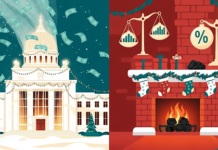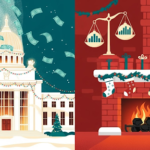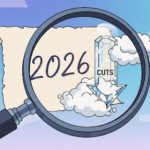Data Blackout: When the Fed Loses Its Compass
When the world’s most influential central bank is flying blind, investors start reaching for their own maps. With the U.S. government shutdown halting critical releases from the Bureau of Labor Statistics and CPI reports, the Federal Reserve is left making policy decisions without its most essential tools. That’s right, the Fed is making decisions without actual data, while investors are still betting heavily on rate cuts before year-end.
This unusual moment exposes just how dependent both policymakers and markets are on numbers that, for now, simply do not exist. The irony could not be sharper. The same institution that emphasizes data-driven decision-making now has to rely on incomplete proxies, model estimates, and what is essentially informed guesswork. Yet markets keep moving as though certainty still exists.
This Week I Learned…
When Data Vanishes, the Fed Looks to the Stars
This week I learned that the Federal Reserve has, on rare occasions, had to operate without fresh economic data, and it is never comfortable. During prior government shutdowns in 2013 and 2018-2019, data releases were delayed, forcing policymakers to lean on alternative indicators, internal staff forecasts, and even satellite-based spending models.
In essence, when traditional metrics vanish, the Fed starts building its own. They often combine partial information from state surveys, regional Fed data, and proprietary datasets from private firms such as ADP and ISM. Yet, these sources cannot fully replicate official labor or inflation data, meaning every rate decision becomes more subjective than statistical.
Interestingly, economists have found that periods of data scarcity often correlate with higher market volatility and trading driven by sentiment rather than fundamentals. The markets, in turn, act as an informal feedback loop for the Fed. As volatility spikes, it becomes a real-time referendum on policy uncertainty.
So yes, this week I learned that the Fed may trust its models, but markets still write the final exam. And for investors, learning to read those indirect signals might just be the smartest move of all.
The Fun Corner
Guess the Data Game
A trader walks into the office and says, “I have no labor numbers, no CPI data, and no Fed forecast, but I am confident about my positions.” His colleague replies, “So, you are a policymaker now?”
Market humor thrives on irony, and this week’s blackout is giving traders plenty of material. The running joke is that analysts are now using astrology to predict the next Fed move. “Mars is retrograde,” one quipped, “so it’s a 25-basis-point cut.”
Behind the laughter lies a truth. Uncertainty creates creativity. Analysts are developing new shadow indexes based on credit card spending, mobility data, and even Google search trends to fill the vacuum. It is a reminder that when the data stops, imagination starts, and sometimes, those unconventional tools end up predicting the market better than the official numbers.
Policy by Proxy: How the Shutdown Handcuffs the Fed
The U.S. government shutdown has sidelined the publication of crucial economic data, leaving the Federal Reserve to approach its late-October meeting with limited visibility. That absence of information is not just inconvenient, it is strategically dangerous. For a central bank that insists on being data dependent, the inability to access real numbers on jobs, inflation, or consumer spending means it is now navigating largely by inference.
Fed Governor Stephen Miran has attempted to strike a measured tone, suggesting that while rate cuts remain on the table, any decision without verified data must be made with caution. His remarks underscore the tension between market expectations and institutional prudence. Investors, however, appear convinced that cuts are coming regardless of the data vacuum, a sign of markets pricing hope over evidence.
History offers limited parallels. During past shutdowns, data delays did not derail policy. But the stakes are higher now. Inflation remains above comfort levels, and any misjudgment could either reignite price pressures or choke off growth too early.
As a result, investors are hedging across the spectrum, rotating defensively into Treasury bonds, gold, and high-grade corporates while keeping an opportunistic eye on high-dividend equities. Growth sectors, especially technology and AI, are swinging on every rumor.
Until the data returns, markets will rely on narrative, not numbers. That makes October one of the most treacherous months for policy missteps and one of the most revealing tests of how much trust the market still places in the Fed’s instincts.
The Last Say
Trading in the Dark
The intersection of uncertainty and optimism defines this week’s markets. As the Fed steps into a data void, investors are reacting less to fundamentals and more to anticipation. It is a strange paradox, a data-driven institution operating on inference and data-dependent markets trading on faith.
Yet in this environment, adaptability becomes the edge. Defensive positioning may seem conservative, but it offers insulation against both policy errors and sentiment swings. Meanwhile, those with longer horizons might find opportunity in quality stocks that can outlast macro noise.
Eventually, data will resume, models will recalibrate, and clarity will return. But until then, markets are essentially writing their own narrative in real time. The key takeaway? In periods when visibility fades, discipline is a better guide than prediction.That is all for this week’s Market Pulse. Stay informed, stay analytical, and remember that sometimes the smartest move in uncertain markets is simply not to overreact.






















